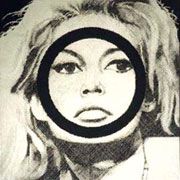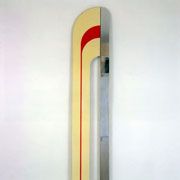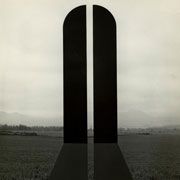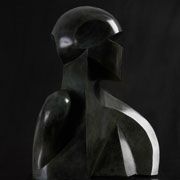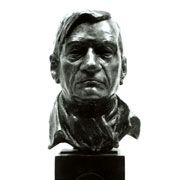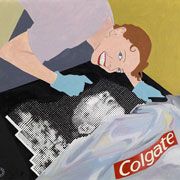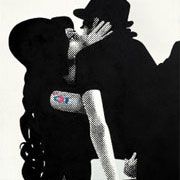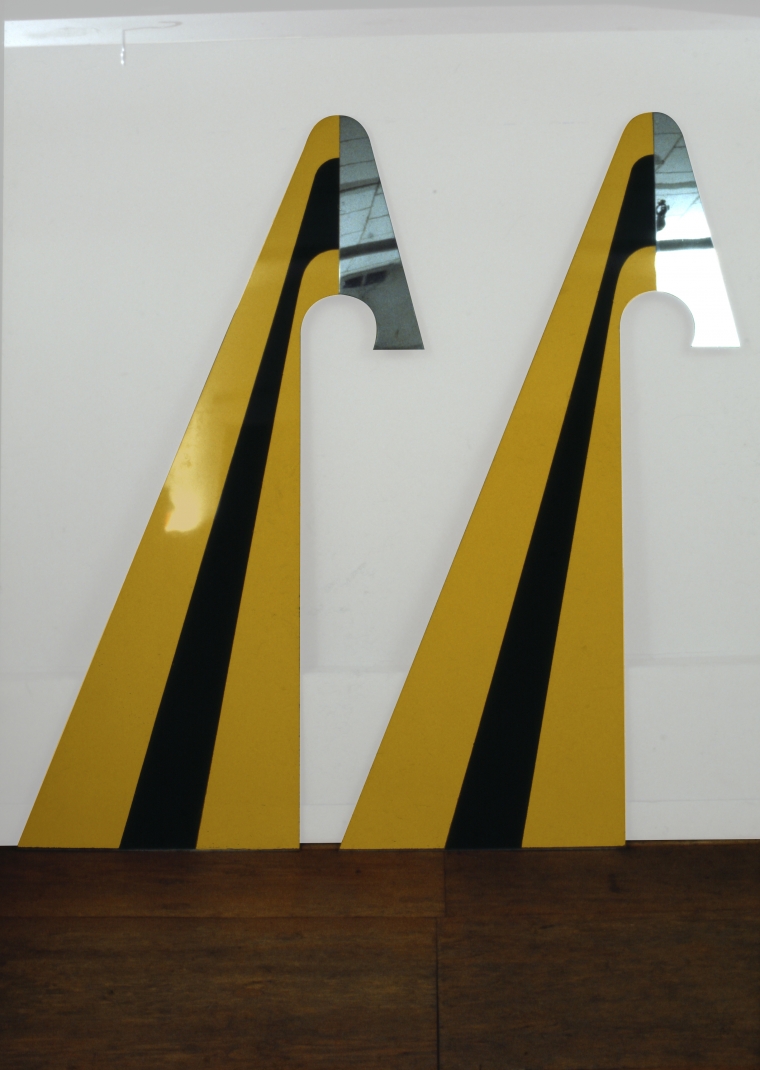
Catalogue Raisonné. Twin
Search the Catalogue
Twin
Catalogue No. 110
Artist's CR 107
December, 1965
New York
Enamel on aluminium and chrome on brass
96 x 94 inches / 244 x 239 cm , 2 parts, 5 inches/ 12.5 cm apart at nearest point
Collection: Unknown
- Four Seasons Restaurant, New York City, 1966
- Highlights of the 1965–66 Art Season, The Aldrich Contemporary Art Museum, Ridgefield, 1966
- Highlights of the 1965–66 Art Season, exhibition catalogue, The Aldrich Contemporary Art Museum, 1966
- Gerald Laing and Alasdair Hamilton, 1971: Gerald Laing, exhibition catalogue, Scottish National Gallery of Modern Art, 1971
Though the group of works, of which this is an example, are made of metal, their third dimension is the minimum compatible with their physical stability. The volume they imply is illusionistic and painterly. Though it is a purely academic point, and one that it would be profitless to pursue, as far as I am concerned they are paintings. This piece is interesting in that it contains two of the forms which are now part of my vocabulary - first, the ‘Pin’ (the painted part, seminal to the later ‘Pyramids’). And, second, the ‘Axe’ (the chromed part, vaguely reminiscent of an executioner’s axe). It has no figurative prop or raison d’etre.
1971: Gerald Laing, Gerald Laing, exhibition catalogue, Scottish National Gallery of Modern Art, Edinburgh, 1971
Perhaps it was in 1965 with pieces like Twin that Laing began to realise that the sculptures were taking on a life of their own. From this point onwards the idea that these are still basically descriptive pieces vanishes. The two shapes in Twin have a quite distinct ‘personality’ of their own, and they contain shapes which Laing has used ever since. By this time Laing was becoming aware that the artistic climate of New York did not suit him. Each work produced at that time seems to be an attempt to astonish us more than the last, a fact surely dependent upon the pressure of living in New York, an artistic forcing house where the artist develops his new ideas under the public gaze. However single-minded the man may be, he cannot fail to be affected by this. Artists such as Warhol thrive on it, indeed incorporate it into their art; Laing took the opposite course in returning to the country of his roots: Scotland.
1971: Gerald Laing, Alasdair Mackintosh, exhibition catalogue, Scottish National Gallery of Modern Art, Edinburgh, 1971

